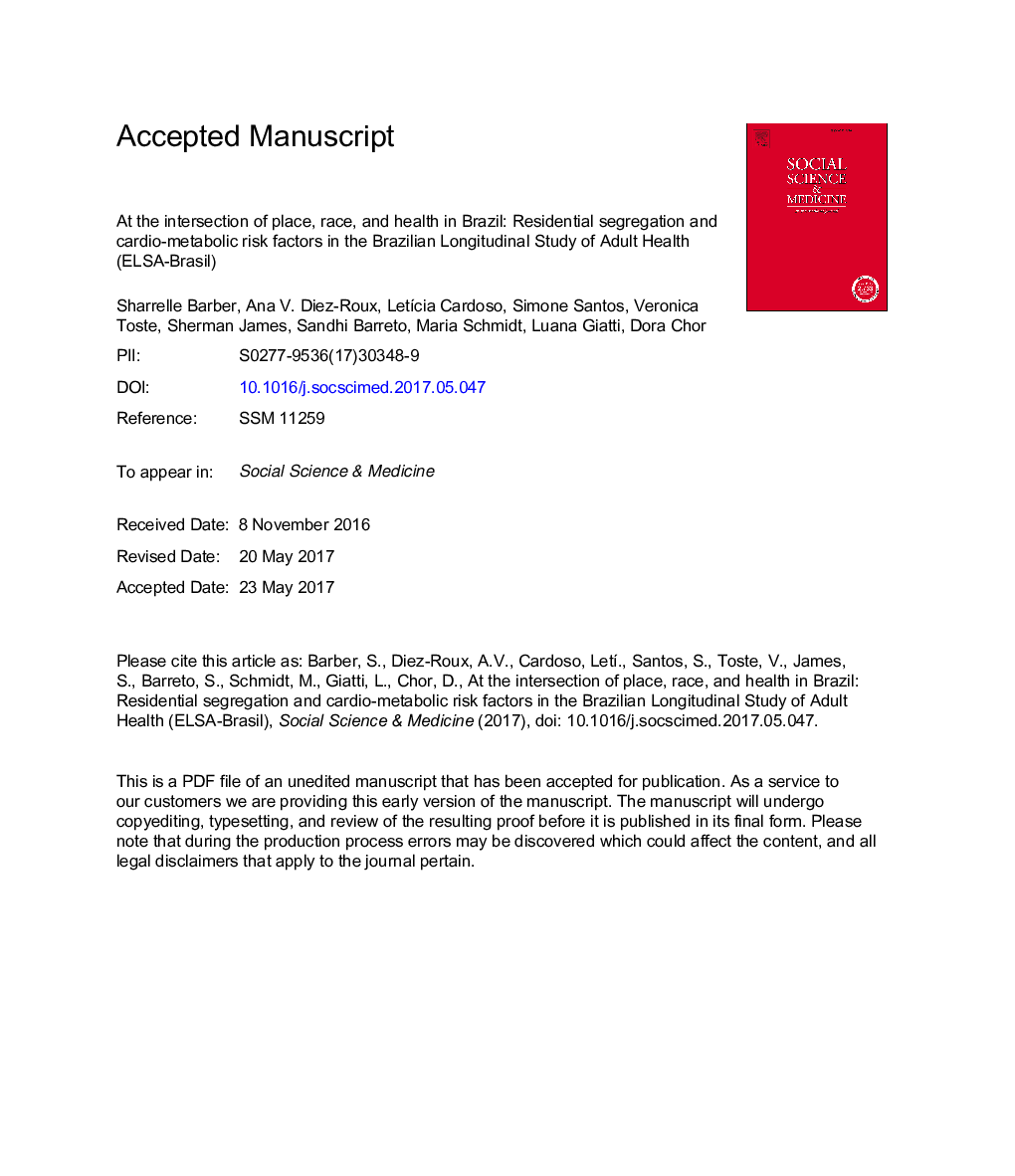| کد مقاله | کد نشریه | سال انتشار | مقاله انگلیسی | نسخه تمام متن |
|---|---|---|---|---|
| 7328508 | 1475970 | 2018 | 34 صفحه PDF | دانلود رایگان |
عنوان انگلیسی مقاله ISI
At the intersection of place, race, and health in Brazil: Residential segregation and cardio-metabolic risk factors in the Brazilian Longitudinal Study of Adult Health (ELSA-Brasil)
دانلود مقاله + سفارش ترجمه
دانلود مقاله ISI انگلیسی
رایگان برای ایرانیان
کلمات کلیدی
موضوعات مرتبط
علوم پزشکی و سلامت
پزشکی و دندانپزشکی
سیاست های بهداشت و سلامت عمومی
پیش نمایش صفحه اول مقاله

چکیده انگلیسی
Residential segregation is the spatial manifestation of entrenched socioeconomic and racial inequities and is considered a fundamental cause of racial inequalities in health. Despite the well-documented racialized spatial inequalities that exist in urban areas throughout Brazil, few empirical investigations have examined the link between residential segregation and health and considered its implications for racial health inequalities in this setting. In the present study, we used data from the Brazilian Longitudinal Study of Adult Health (2008-2010) to examine the association between economic residential segregation and two major cardio-metabolic risk factors-hypertension and diabetes. We also examined whether associations were stronger for historically marginalized racial groups in Brazil. Residential segregation was calculated for study-defined neighborhoods using the Getis-Ord Local Gi* statistic and was based on household income data from the 2010 IBGE demographic census. Multivariable logistic regression models were used to examine associations. In our sample, Blacks and Browns were more likely to live in economically segregated neighborhoods. After taking into account income, education, and other demographic characteristics we found that individuals living in the most economically segregated neighborhoods were 26% more likely to have hypertension and 50% more likely to have diabetes than individuals living in more affluent areas. Although Blacks and Browns living in highly segregated neighborhoods had higher prevalence of hypertension and diabetes compared to Whites, we observed no statistically significant racial differences in the associations with residential segregation. Our findings suggest that residential segregation may be an important structural determinant of cardio-metabolic risk factors in Brazil. Moreover, the systematic and disproportionate exposure of Blacks and Browns to highly segregated neighborhoods may implicate these settings as potential drivers of racial inequalities in cardio-metabolic risk factors in urban settings in Brazil.
ناشر
Database: Elsevier - ScienceDirect (ساینس دایرکت)
Journal: Social Science & Medicine - Volume 199, February 2018, Pages 67-76
Journal: Social Science & Medicine - Volume 199, February 2018, Pages 67-76
نویسندگان
Sharrelle Barber, Ana V. Diez Roux, LetÃcia Cardoso, Simone Santos, Veronica Toste, Sherman James, Sandhi Barreto, Maria Schmidt, Luana Giatti, Dora Chor,